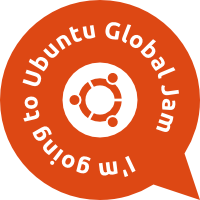Is anyone following the CentOS and/or Scientific Linux stories closely? Here’s a recent article “The rise and fall of CentOS” that I found informative about the lack of a CentOS 6 release now six months after the release of RHEL6.
Author: berkeleylugtransferred
Major New Linux Releases – May 2011
In case you haven’t heard, in reverse alphabetical order…
Ubuntu 11.04 is out with Unity as the default desktop interface. http://ubuntu.com
RHEL 6.0 was released in Nov 2010, but RHEL 6.1 Beta was released in March http://redhat.com.
openSUSE 11.4 was released in March. http://opensuse.org
Fedora 15 will be released in a few short weeks featuring Gnome 3 as the default desktop interface. http://fedoraproject.org
Debian Squeeze 6.0.1 was released in March. http://debian.org
Other distros like arch having rolling releases.
What cool new distos are you using these days as the summer heats up? What informed opinions do you have about the decisions that made up these releases and others?
Ubuntu Global Jam on Sunday April 3rd
At a special off-week BerkeleyLUG meeting we’ll be meeting at Bobby G’s Pizzeria at 2072 University Ave in Berkeley with members of the Ubuntu California Team for an Ubuntu Global Jam!

An Ubuntu Global Jam is an opportunity for users to get together to learn how to do testing of the latest Beta 1 ISOs for the next Ubuntu release, learn about bug work, documentation and other ways to get involved with the Ubuntu community and take your first steps.
There will be copies of the latest ISOs available for Live testing (without installing anything on your computer) on CD and USB stick.
You may RSVP here, but it is not required to attend: http://loco.ubuntu.com/events/team/808/detail/ (you will need a Launchpad.net account).
TV show promoting Linux in schools!
We have an opportunity to introduce a mainstream TV audience to the great stuff that Linux can do in schools, but we need 25 Linux enthusiasts to commit to show up in order to accomplish it.
I just spoke with a program manager for a TV show called ABC 7 Live. They are interested in having supporters of Linux in schools (and particularly Partimus.org) attend a show. The show airs daily from 3 pm to 4 pm. I need a list of 25 people who will attend. I need the list by Thursday, 12/9/10 at 3 pm. You must be on the list to be admitted to the studio. I am coordinating the list, so please be sure to email me to get on the list. You can email me at einfeldt a t gmail dot com. You can watch shows from the archive here
Compiling the new responsive kernel from scratch.
The new “200 lines of code” that makes the system more responsive is finally out! It is included in Kernel 2.6.37-rc3. This guide will explain how to install it on your system!
If you have Ubuntu, you can download the Debian packages:
http://kernel.ubuntu.com/~kernel-ppa/mainline/v2.6.37-rc3-natty/
First, download the latest patch and sources from kernel.org.
http://www.kernel.org/pub/linux/kernel/v2.6/testing/linux-2.6.37-rc3.tar.bz2
http://www.kernel.org/pub/linux/kernel/v2.6/testing/patch-2.6.37-rc3.bz2
#Extract and apply the patch:
tar xvf linux-2.6.37-rc3.tar.bz2
mv patch-2.6.37-rc3.bz2 linux-2.6.37-rc3/
cd linux-2.6.37-rc3
bunzip2 -d patch-2.6.37-rc3.bz2 | patch -p1
#Start the build process:
make clean
make menuconfig
make -j3 all
make -j3 modules_install
#Install and update GRUB:
make install
mkinitramfs -k 2.6.37-rc3 -o /boot/initrd.img-2.6.37-rc3
update-grub
Best way to hack a cell phone…
…is to have a good Samaritan nearby use the Heimlich maneuver on your desperate person. Better yet: don’t swallow it in the first place, so you’ll never *need* to hack it up! Take my nanowife, please!
😛
No, seriously folks, I just purchased my first cell phone. For two dollars and fifty cents…such a deal! I selected the sexiest from the lot of ’em, at a thrift store on Duboce and Church: “Out of the Closet”. Now, all I needed was a phone charger and I’d be in business…which charger BTW, cost far more than the phone itself.
Now, I could finally learn what all this bruhaha is about re. “texting”. Downloaded the user guide, and…Wow, what a ridiculous waste of time, but at least I get the drift: treat your fingers like little slaves, working them to the bone till they’re all wasted from RSI and you’ll need to wear digit splints on your texting hand for the rest of your life…and you’re not even 30 yet! Or maybe even texting while crossing a busy intersection and–in your absorbed T9Word rendering–inadvertantly step on (and squash into its next life) a hapless black cat that had just veered off the sidewalk to avoid scampering under a ladder. Moving on…
Why did I buy a used cell phone? Why didn’t I just go the regular subscription route? Only because–as one who is dead set on never acquiring this new-age albatross to tether me down to a chattering network of inane blathering for a highway robbery sum–I also saw the good in acquiring a diminutive handset, just for the sake of 911…which number by law, every cell phone is required to access, *including* those that are not subscribed.
Mine is the Verizon LG VX4600, which debuted waaay back in 2003. It’s in excellent condition, battery just fine. But now that I own a cell phone, I want to *play* with it, outside and beyond the subscription realm. Or IOW, I want to learn how to *hack* the precious little silver hand robber.
So I’ve just begun the adventure, and would like to share the following cell hacking sites for others who may enjoy:
Cell Phone Hacks – How to hack your cell phone (Samsung, LG, etc)
How to Unlock Your Cell Phone for Free
Mobile Phone Resource & Community
Of course, I am limited from performing any hacks that require my own subscription, but *meh* I can handle that. Just think of all the money I’ll save! (‘Scuse me now while I figure out how to “sext” w/o a camera; maybe I can arrange smileys in some compromising position.)

😐
—
Zeke Krahlin
Free as in dandelion necklaces.
Enterprise 6 on your desktop?
![]() RedHat Enterprise Linux is known for it’s security and stability on servers. Later this year, Redhat will release Enterprise Linux 6.0 and CentOS will release their version shortly after. CentOS is built entirely from RedHat’s sources. They are basically the same thing minus the RedHat artwork and support. What do you think about using it on your home desktop?
RedHat Enterprise Linux is known for it’s security and stability on servers. Later this year, Redhat will release Enterprise Linux 6.0 and CentOS will release their version shortly after. CentOS is built entirely from RedHat’s sources. They are basically the same thing minus the RedHat artwork and support. What do you think about using it on your home desktop?
I came close to using CentOS 5.5 100% at home. The downfall
was multimedia applications such as k9copy and Kdenlive. CentOS/RedHat 5 is based off Fedora 6, which is very old. However, version 6 will be based off Fedora 12 which was just surpassed by Fedora 13. Fedora 12 was a great release in my opinion because it was stable and had recent versions of all the applications that I needed. After trying the RedHat 6.0 beta, I was able to install all of my modern applications and be 100% productive at home and work.
My question to all of you out there is would you use CentOS/RedHat on your home desktop? What are your thoughts? Do the non-bleeding edge packages matter to you? My opinion now is that release 6 may be good on the desktop for a year or so before the age of the packages starts to show. How long do you think you can use enterprise Linux for? Would you feel that you are missing out on the new desktop Linux features?
New Mephisto Backup v1.10.4 released and looking for devs!
The fourth update to the Mephisto 1.10 series has been released. New features were back-ported from v11 to increase stability because the 1.10 branch is going for stability. This project is also looking for developers for new features and stronger development. If interested, please email phillip.tribble@gmail.com. Documentation engineers are also appreciated.
This program can do simple backups and syncs over a network or locally. Mephisto Backup was made with the Java programming language. The key feature of this program is the ability to backup your system to an image and copy it to a Linux Live DVD for future restoration. The user can then take that cd and move his or her system to any PC.
Location: http://mephistobackup.webhop.org/
Also, test out the v1.11 beta and submit feedback =)
Upgrading Fedora and retaining your existing programs.
I had an idea on how to make the upgrade process easier for my Fedora installation. I had Fedora 12 installed and wanted to upgrade to Fedora 13 with the same programs installed. The same concept can be applied to most distributions.
Instructions:
1. On my Fedora 12 box:
rpm -qa | cut -d – -f 1 > packages.txt
This command will print all the installed packages and remove the version information and architecture.
2. Install Fedora 13.
3. Copy packages.txt from Fedora 12 to Fedora 13.
4. Copy .repo files in /etc/yum.repos.d from Fedora 12 to Fedora 13.
5. yum install -y –skip-broken `cat packages.txt`
6. Done. =)
SSD and system logs.
My backup web server has a 8GB CF card. I want to reduce the number of writes to it as much as possible to save money and keep my server healthy. I added the following to my /etc/rc.local so that the logs files are created in RAM every time the server boots. The only downfall to this is that you will not have any logs if the system crashes to diagnose the problem, oh well =)
How it works:
1. Create the ram disk directory.
2. Mount the ram file system.
3. Erase old logs.
4. Use touch to create an empty log file in the ram disk directory.
5. Link the log file in the ram disk directory to /var/log
[ /etc/rc.local ]
#Creates a tmpfs RAM disk and mount it
mkdir /ramfs;mount -t tmpfs /dev/ram0 /ramfs;mkdir /ramfs/httpd
LOG[0]=messages
LOG[1]=secure
LOG[2]=maillog
LOG[3]=yum.log
LOG[4]=rpmpkgs
LOG[5]=dmesg
LOG[6]=boot.log
LOG[7]=spooler
LOG[8]=scrollkeeper.log
LOG[9]=cron
LOG[10]=Xorg.0.log
LOG[11]=acpid
LOG[12]=btmp
LOG[13]=wtmp
LOG[14]=httpd/access_log
LOG[15]=httpd/error_log
for ((c=0;c<=15;c++))
do
rm -f /var/log/${LOG[c]};touch /ramfs/${LOG[c]};ln -s /ramfs/${LOG[c]} /var/log/${LOG[c]}
done